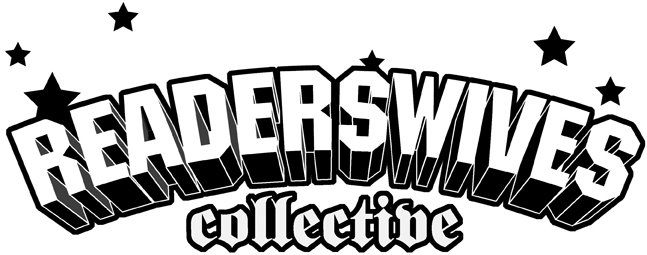‘UNTIL YOU GET CRUSHED BY a tree or stabbed by a clown, painting – that’s what you want to be doing,’ Mr Jago tells me. Originally an illustrator, and pioneer of the doodle, Jago is now notorious for silk paintings of robots; exploding onto the Bristol scene in the 90’s, he’s been sending shockwaves across the world as far as Japan. Strange, then, that he’s here in Guernsey, eating chips in Trinity Square and drinking Breda like a local.
Painting has been the name of the game this weekend, and it’s not just Jago who’s in on the action. He’s here with heavyweights of what’s come to be known as the UK ‘street art’ scene, Inkie, Cheba, and Nikill, on tour with the Bristol-based live art phenomenon, Weapon of Choice. Set up by Cheba at the beginning of this year, WOC is typically a pub or club event involving the collaboration of two or more artists. As hip-hop/funk beats ooze from the speakers, the artists invariably abuse pen, paint, and not a little liquid inspiration to create – in the course of one evening – a black-and-white masterpiece.
The Readerswives Collective have somehow managed to lure over not two, but four of these Belton-wielding Bristolians. On Friday night, beer in one hand and paintbrush in the other, they blitz some 20ft of wall-space in Rogues nightclub to the ambient sounds of DJ oneofakind’s funk collection.
Considering the loud noises, alcohol and inevitable distractions involved in such a venture, the results are visually stunning. Inkie’s bold style manifests itself as a beautiful twenty-first century bastardisation of art deco, and the black and white medium and limited production time make this work all the more immediate. Cheba’s cartoon characters and wispy evocations of a snowstorm are equally well suited to the parameters of the project. What’s more, the convergence of the static art object with the time frame of just a few hours makes it comparable to performance art; and this kind of pluralism is exactly what the accompanying Centre Fold Gallery exhibition is all about.
Staged the following night, it’s here at the gallery that the artists really show their individual colours (no pun intended). They display a wide range of pieces, from screen prints to mixed media canvases. Inkie is perhaps the best known of the four: he’s worked with Banksy, and is now Head of Design for Sega. His canvases broadcast his confidence, mixing opulent reds and golds with a healthy dose of street. Since Inkie’s roots are planted so firmly in graffiti culture, I wonder what he thinks of street art as an emerging movement. ‘Street art, as a term, is a load of bollocks,’ he tells me, ‘just a way of avoiding the g-word.’ But there are advantages to the current artistic environment: ‘Graffiti has certain parameters, it’s not boundless. Street art has more scope. It can be anything that catches your eye. And, combined with the rise of the digital canvas, it means art is more accessible to young people.’
Jago shares a similar aversion to what he sees as the street art ‘pigeonhole’. ‘I’m in that category because of when I came out and what I do, but I’m not comfortable with the label. It’s a bit like being in a band, and going into a record shop to see your CD in the ‘Dance’ section. What if you’re more than one category? It just doesn’t encompass everything.’
Cheba, who masterminded the Weapon of Choice concept and has driven it to its current success, takes another slant on labels. ‘Street art means public art. It’s selfish. Art forced in people’s faces. It doesn’t matter if you don’t want to see my art, it’s fucking there.’ His pieces reflect this frank statement; his work remixes Warhol and Lichtenstein images as well as corporate logos. For example, one of his artworks features the five circles of colour that make up the logo of Crylon – an old make of spray-paint that used by graffiti artists – but he’s turned them into disgruntled little round faces. Instead of the clean circles of the original logo, his pools of colour bleed luscious drips down a black background. Hence it both endorses and subverts; it is self-reflexive, essentially ‘street art about street art’.
Nikill’s work is the most understated of the four, and clearly remarks on his deep respect for older artists – not least Mr Jago. He combines spray paint, acrylic and markers to produce a series of interlinking, heavily layered canvases where ‘angles, mathematics and science combine.’ It seems that his influences are the most important aspect of his attitude to ‘street art’; given his contemporary style, reminiscent of the sketchiness of fellow Bristolian filth-monger Xenz, I’m impressed when he tells me his influences reach as far back as Turner. His reverence for artistic predecessors has obviously paid off for him – he had his first solo show aged 15, and had staged a sell-out exhibition at Seven (Bristol) by the time he was 17. Now, at just 20, he owns his own clothing label, ‘Love the Leaf’, and is a budding music producer.
It’s a multi-faceted and thought-provoking exhibition, and after the exploits of Friday night’s live drawing, I’m overwhelmed by the Weapon of Choice experience. It’s a successful opening night, too, with all 6 of Jago’s silk paintings selling within minutes of commencing business. Everyone’s tired, but happy, and the four artists reflect on their weekend. It was ‘perfect’, they all agree, vehemently promising to return as soon as their busy schedules will allow.
Text by Foxy Paw
Subscribe to:
Post Comments (Atom)

No comments:
Post a Comment